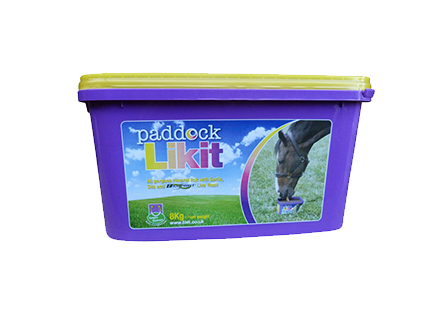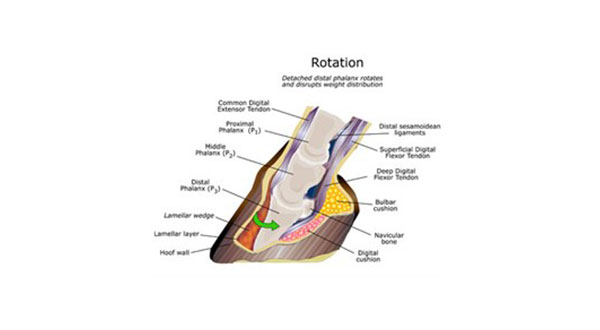
How to cope with Laminitis
Laminitis is an extremely painful condition for your horse.
Read on for some top tips as to how to manage this condition.
What is Laminitis?
Laminitis is very painful, causes lameness and commonly occurs in the front feet causing the animal to lean backwards as it tries to take the weight off the affected feet. In severe cases the pedal bone rotates and penetrating the sole and the hoof horn separates from the underlying tissues. Any suspicion that an animal is developing laminitis must result in immediate veterinary attention.
There is something that happens in the horse or pony gut that causes these serious changes in the animal’s foot. As yet we do not know where in the gut but we assume (possibly wrongly) that something “goes wrong” in the large intestine but again, we do not know how this process works. Some complex grass sugars (fructans) are often blamed for starting off the process. Thus, it seems reasonable to try to “manage” the digestive system so that it operates in the way that it was designed to do. Protein digestion begins in the stomach and finishes in the small intestine and starch and other sugars should be completely digested in the small intestine. Fermentation in the large intestine takes care of the fibrous components of the diet but we do not want overflows of starch from the small intestine into the large intestine as this will disturb the bacteria there. Fat horses or ponies predisposed to laminitis need their digestive systems “managed” and their weight (fat) gradually reduced. Any starch that is fed must be high quality and cooked, to ensure total small intestinal digestion and also, it should be fed in quantities that do not exceed the small intestines’ capacity to digest it. Thus, by following this procedure we can “normalise” digestion-quick energy sources are digested in the small intestine and slow energy sources are fermented in the large intestine!
Unfortunately no-one has really researched the best nutritional support for animals that suffer from or, are prone to laminitis. So we have to rely on common sense when it comes to feeding these animals. The following guidelines may be useful:
– Maintain optimum body weight/condition by regulating energy intake, the Snak-a-Ball can be helpful in extending feeding times whilst limiting the ration.
– Select ration ingredients that will be wholly digested in the appropriate part of the gut
– Do not starve animals and use straw to satisfy appetite
– Poor roughage-only diets should be supplemented (Paddock Likit perhaps) to ensure adequate nutrient intakes to support tissue needs and repair
– Be aware that limiting grazing access forces animals to compensate by stepping up their rate of grass intake when allowed into the field
In conclusion, prevention is obviously the better strategy and this may be achieved by not allowing over consumption of starch-rich feeds or grass and regulation of body weight since we know that obesity is an important predisposing factor.
Written by Dr Derek Cuddeford


